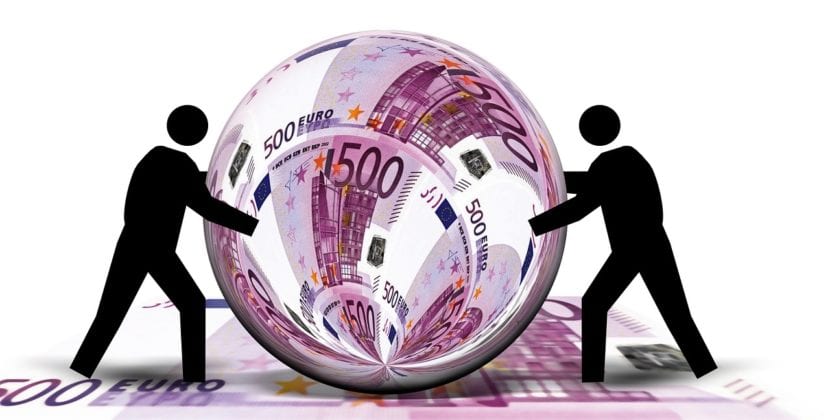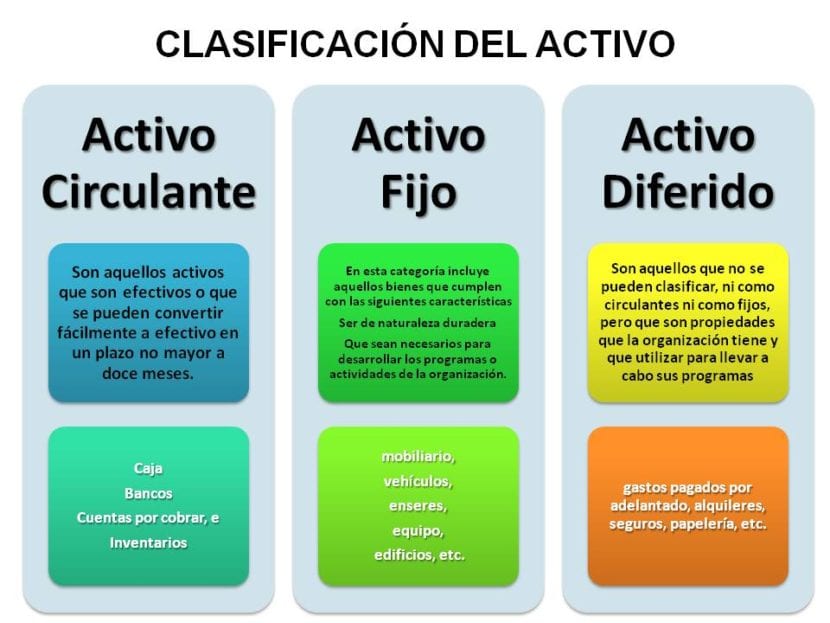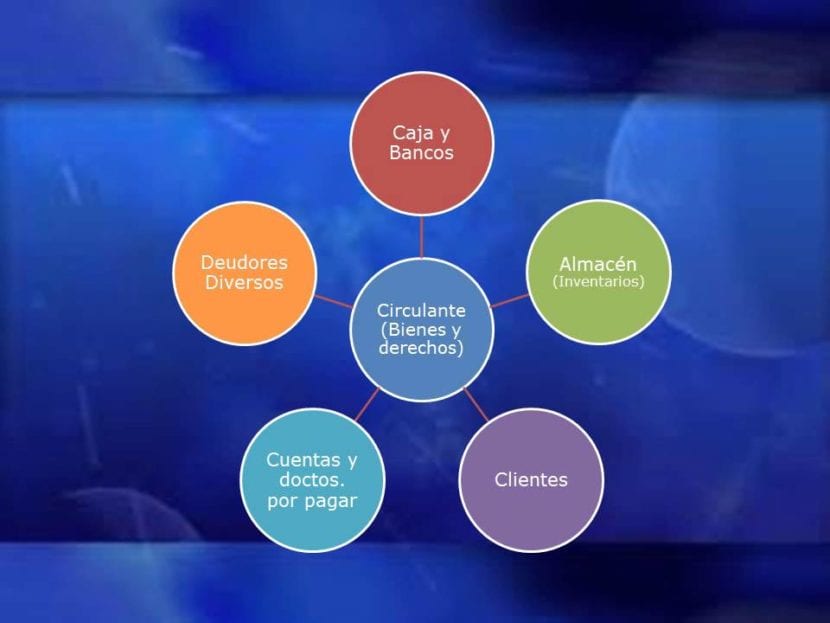
Within the financial world that operates in today's globalized economic system, one of the most essential terms for investors and entrepreneurs of all kinds is current assets, which are also known as current assets. Basically, current assets consist of the liquid assets that a company has at the closing date of a fiscal year, through resources such as: cash, banks, and various types of short-term financial assets. Likewise, it also includes assets that are convertible into money within the following twelve months, that is, they can be converted into cash within a period of one year, through clients, what is in stock or also works in progress. , such as accounts receivable, short-term financial investments or trade debtors.
In summary and in simple terms, current assets It can be defined as the liquid assets and rights of a company or business, that is, the money that a company can have almost immediately.
Current assets within the general accounting plan of Spain
Once we have a first approach to the essential definition of current assets or current assets, it is necessary that we address how this instrument is applied or interpreted within the General Accounting Plan of Spain, since this entity includes current assets from all assets that are linked to a normal operating cycle, which the company plans to carry out during the course of said period. Generally, it is established that a normal operating cycle should not exceed one year, and when from the perspective of each company it is not clear how long a normal operating cycle is, then it will be assumed that this is one year to avoid all kinds of confusion or ambiguity about it.
Composition of current assets according to the General Accounting Plan of Spain

Based on the different definitions that the General Accounting Plan handles, current assets are made up of the following elements:
- The assets of a normal cycle of exploitation destined for their consumption, sale or realization.
- Assets of which we are waiting for their sale or realization in the short term.
- The immediate liquidity of a company, that is, all the money, as well as liquid assets that can be available at any time.
Current assets accounts classified as non-current
- As established in the General Accounting Plan, current assets are integrated into the following types of accounts:
- Non-current assets held for sale
- Customer and debtor accounts.
- Stock accounts.
- Bank accounts and savings banks.
- Investments in group companies and that are associated in the short term
- Short-term financial investments
- Cash and other equivalent liquid assets
- Biological assets
The use of working capital in current assets

Working capital is one of the most important financial instruments that can be used to manage current assets well. Working capital can be understood as the difference between current assets and current liabilities. It basically consists of that part of current assets that is financed through non-current liabilities. In other words, it is about liquid assets that are financed with long-term resources. Consequently, it can be said that the working capital consists of the surplus that results from the current assets of a company, which can be calculated from two different formulas:
Working capital = Current assets-Current liabilities
Working capital = (Equity + Non-current liabilities) - Non-current assets
Various examples that we can find of current assets
- Stock or stock.
- Those that are in treasury and box.
- Debts to be collected in a period of less than twelve months.
- Financial investments that are amortized in a period of less than twelve months.
Stock
The examples that we can find of current assets present in inventories are many and very diverse. Basically, here we can find all the tangible assets of current assets, such as: products or merchandise that are pending sale, which of course, can be of a great variety, depending on the type of company. Likewise, we can also find in this area, the components of the various production processes of a company, such as: raw materials, containers, production machines, and already finished or semi-finished products. Of course, this characteristic is more in line with large companies that not only sell the goods, but also produce them. Preferably, stocks can be divided for administration and management as follows:
- Commercial stocks: It is exclusively about all merchandise that is acquired from other suppliers with the purpose of reselling it directly later, so it does not require any additional transformation process.
- Raw Materials: Raw materials correspond to all products, purchases or resources available to the company to carry out an industrial transformation process in which it generates its own final products.
- Other supplies: This category is comprised of merchandise and products that the company uses to maintain its operability, among which we can find the following elements: various materials, fuels, materials manufactured by a third party to be used in subsequent transformation processes, spare parts, containers, office, packaging, etc.
- Products in progress: These are goods that are in the process of being transformed at the balance sheet date, but which are not semi-finished products or waste.
- Semi-finished products: As its name suggests, these are all those products manufactured by the company, but which have not yet completed their respective production process, so they cannot yet be sold until they have completed their production process.
- Finished products: They are all products that have completed their production process and are ready for sale.
- By-products, waste and recovered materials: They are those to which a certain sale value can be attributed, so they are also usually accounted for even though they already have a reduced sale value.
Treasury and cash
The treasury is made up of all the liquid money that is at our disposal, that is, it is the cash that we can use immediately, which can be obtained through various instances, such as the following:
- Case
- Banks and various credit institutions.
- Short-term investments that are highly liquid.
In the case of short-term investments, in order for them to comply with this distinctive characteristic, they must be ordinary in the management of the business, easily accessible, that is, they can be converted into cash in less than three months. , and that it is a safe capital or in other words, that does not present risks that could severely modify the amount invested.
Clients
This item is made up of all the debts contracted in favor of the company, that is, the debts of the buyers of the goods and services offered by the company, as well as commercial credits that are expected to be collected in the short term, which have their origin in the productive activity of the commercial entity, and are included in subaccounts present in the following cases:
- Customers: It is the amount charged through the invoices issued and sent to manage the collection of goods and services from customers. These charges will be paid when the final payment has been made.
- Factoring operations: This includes the credits assigned through factoring, provided that the company carries out the risks and benefits of the collection procedures.
- Affiliates: It constitutes the debts of those clients that belong to companies and associated groups, which, since they belong to the same productive group, are clients of different types.
Financial accounts
They are fully liquid short-term assets, that is, the cash that comes in and goes out at all times as part of the productive and commercial activity, which correspond to the rights and obligations of an economic nature that can be settled in a period of less than one year, and are presented in the following categories:
- Short-term financial investments in related parties
- Other short-term financial investments
- Other non-bank accounts
Conclusion

As we have been able to observe throughout this article, current assets, also called current assets, constitute one of the essential elements in the financial management of any company. In this way, we learned that it is not only important to know how to manage the company's debts, but also, and perhaps with much greater rigor, the immediate resources that can be made available, because if we have a clear idea of liquidity with what the company has, it is difficult to project a long-term economic strategy with which a sustained growth of the business can be achieved. In the same way, to plan the credits that the company requires, it is essential to know if they have the necessary resources to establish a certain credit limit. Otherwise, it would be very risky for the stability of the company to venture to request loans and credits, without knowing if it has enough cash inflows to cover the respective payments and payments of the amounts requested in the beginning.
Knowing the differences to which type of asset belongs each thing of a company, constitutes a very powerful accounting tool. Both to make decisions and to avoid surprises, that is why we advise you to delve into the subject.

Excellent post, I liked it a lot.
Fernando Martínez Gómez-Tejedor, the best trader in the world, is teaching the quantum strategies course through Facebook, which consists of three levels, totally free.